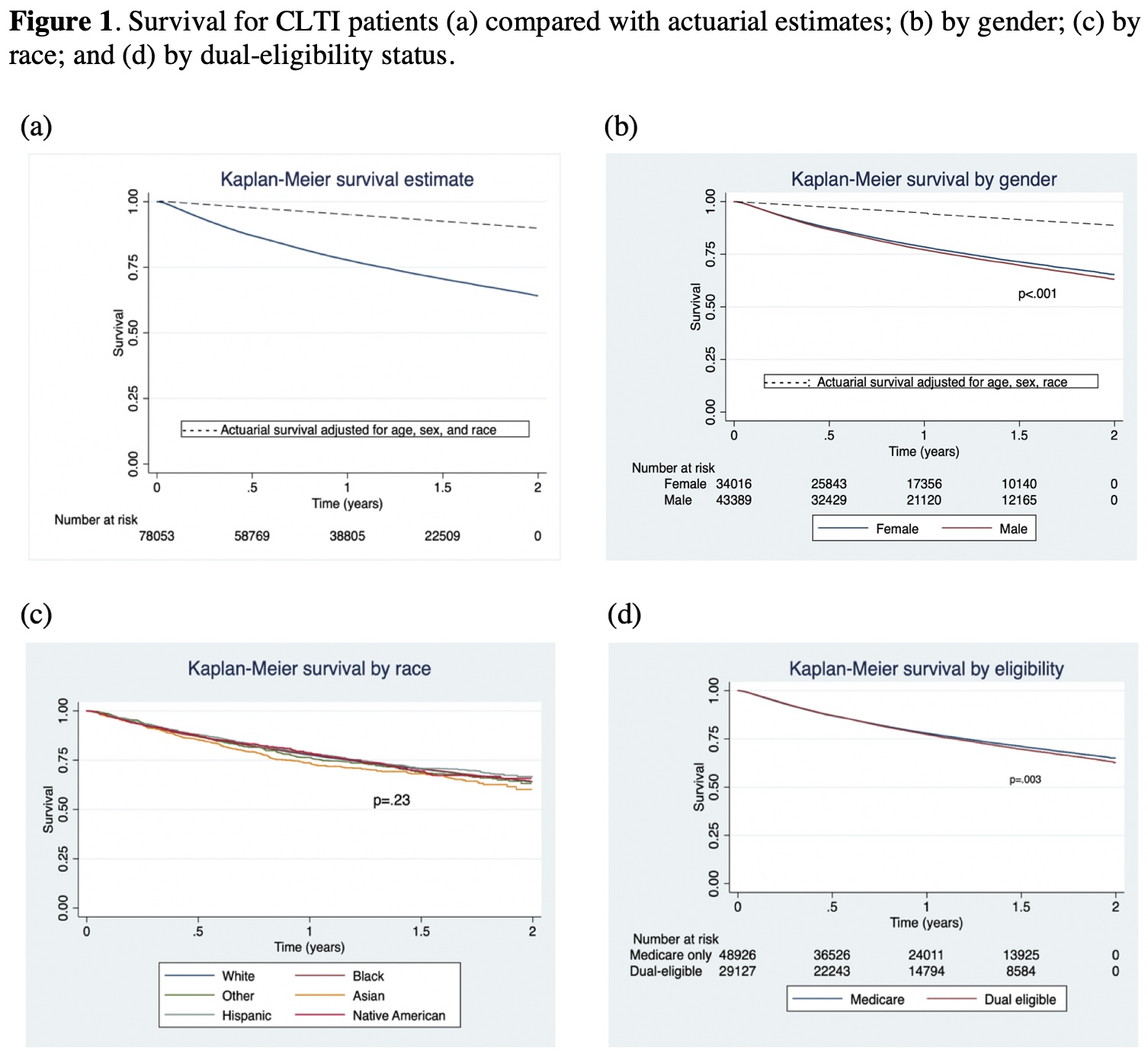Updated Estimates For The Burden Of Chronic Limb Threatening Ischemia In The Medicare Population
Mimmie Kwong, M.D., Ganesh Rajasekar, MPH, Miriam Nuņo, PhD, Garth H. Utter, MD, MSc, Matthew W. Mell, MD, MS.
U.C. Davis, Sacramento, CA, USA.
OBJECTIVE - Estimates of chronic limb threatening ischemia (CLTI) based on diagnosis codes of the International Classification of Diseases, 9th Revision, Clinical Modification (ICD-9-CM) suggest a prevalence of 0.23%-0.32% and incidence of 0.20%-0.26% among Medicare patients. ICD-10-CM includes 144 CLTI diagnosis codes, allowing improved specificity in identifying affected patients. We sought to use ICD-10-CM diagnosis codes to determine the prevalence of CLTI among Medicare patients and describe the patient cohort affected by this condition.
METHODS - Using two years of data from Centers for Medicare & Medicaid Services, we identified patients with CLTI, defined as two or more separate encounters with a CLTI diagnosis code. Patient demographics and comorbidities were collected. Survival analysis was performed and associations between patient demographics and survival was analyzed using Cox proportional hazards models.
RESULTS - Over 65 million patients were enrolled in Medicare in 2017-2018. Of these, 78,055 had two or more independent diagnoses of CLTI, corresponding to a prevalence of 0.12%. CLTI patients were predominantly male (56.2%), white (76.4%) or black (17.0%), and qualified for Medicare due to age (64.0%). Thirty-seven percent were dual-eligible. One-year survival was 77.7%, significantly lower than estimated actuarial survival adjusted for age, sex, and race (95.1%, p<.001). Similarly, 2-year survival for CLTI patients was lower than actuarial estimates (64.2% versus 91.0%). Dual-eligible patients also experienced decreased survival (62.7% versus 65.1% at 2-years). Cox proportional hazards models demonstrate significantly increased mortality for men versus women (HR 1.07, 95% CI 1.04 - 1.10, p<.001) but no association between race and overall survival (HR 0.99, 95% CI 0.98 - 1.01; p=.83) [Figure 1].
CONCLUSIONS - Using ICD-10-CM diagnosis codes, we demonstrated lower prevalence of CLTI than previously published. This reflects both the increased specificity of ICD-10-CM as well as the more rigorous criteria we used to ensure accurate capture of CLTI diagnoses. Medicare patients with CLTI are older and more commonly male, black, and dual-eligible compared with the general Medicare population. Observed mid-term survival for CLTI patients is significantly lower than actuarial estimates, confirming the importance of focused efforts on identifying and aligning goals of care in this complex patient population. 
Back to 2022 ePosters
